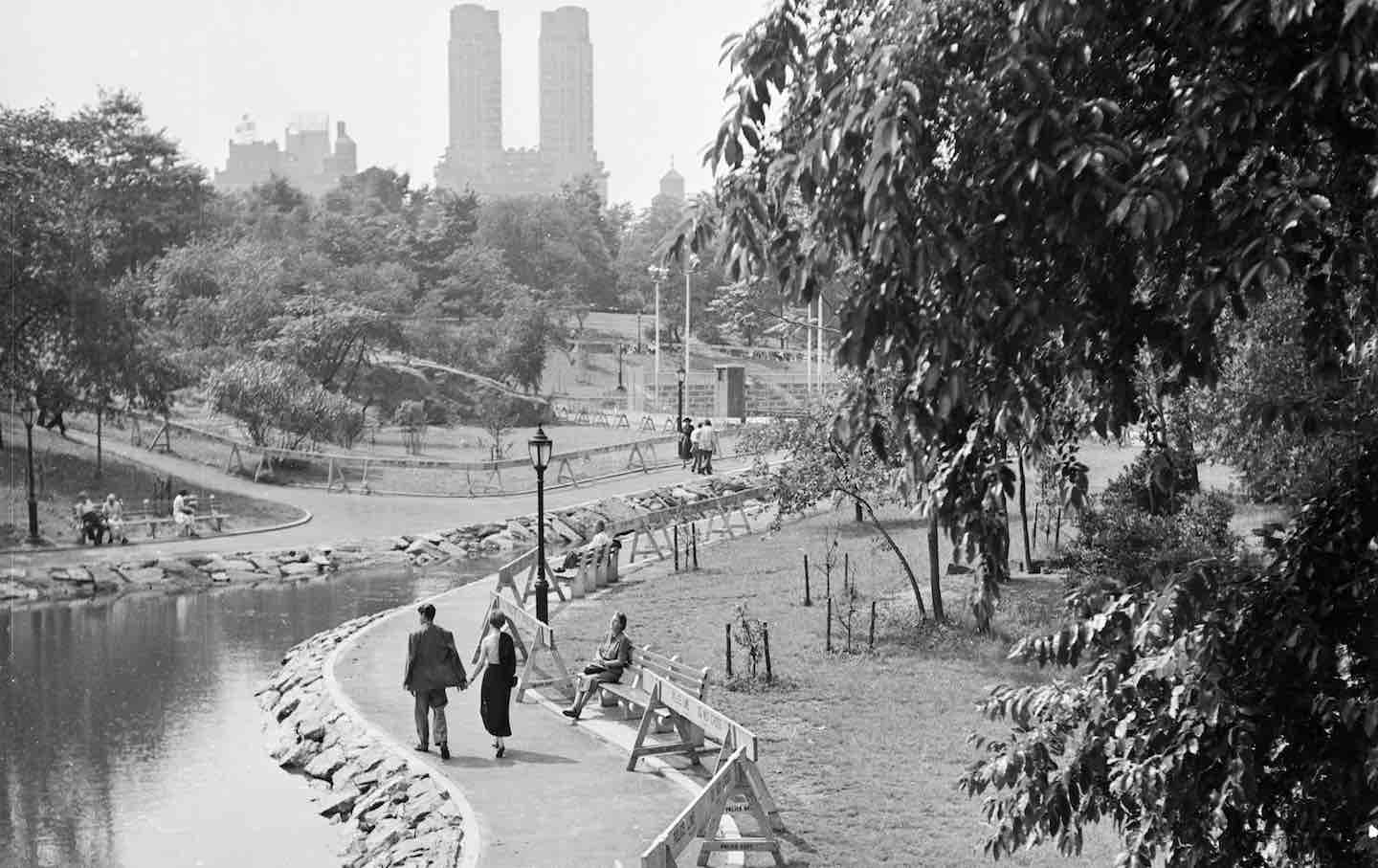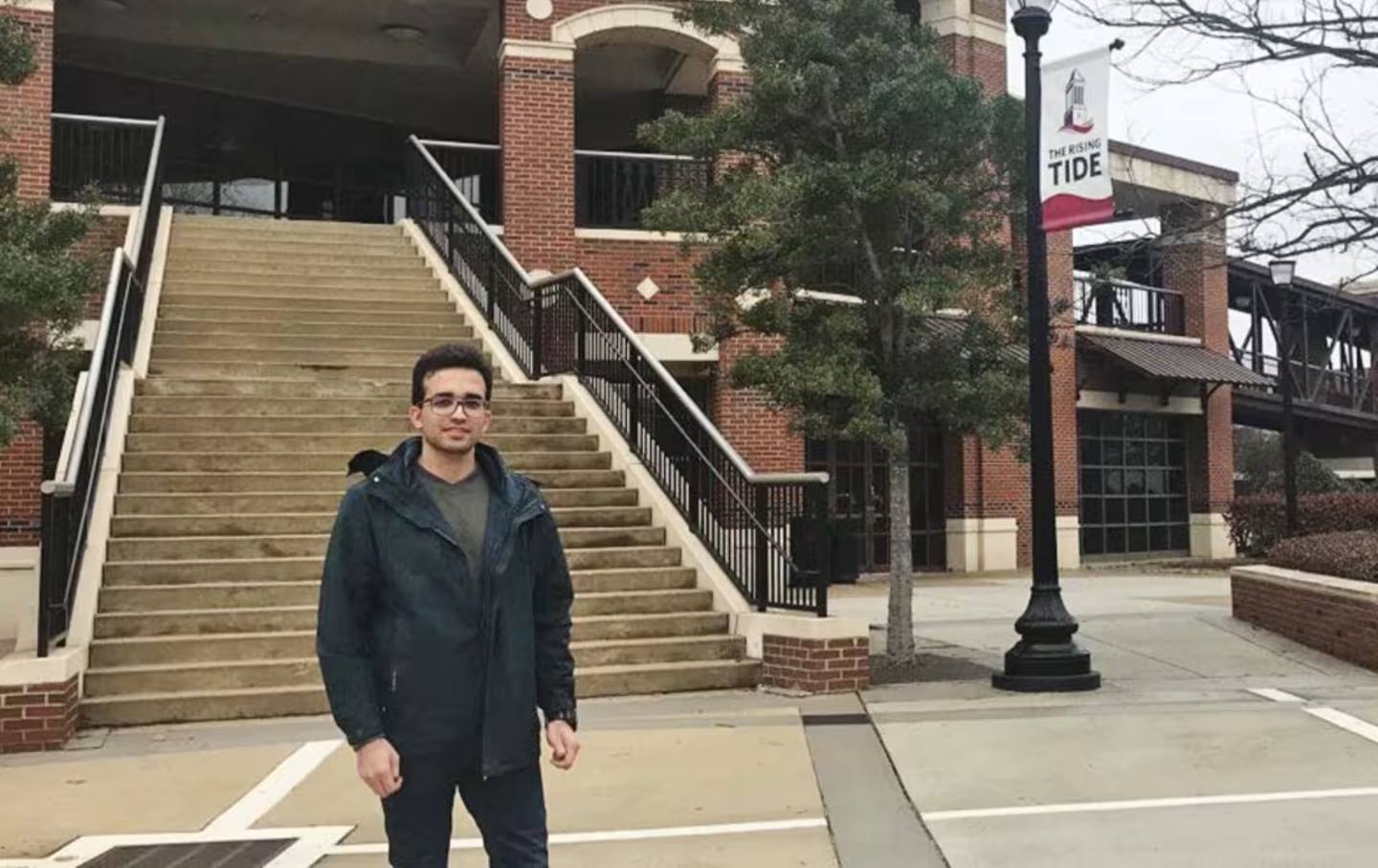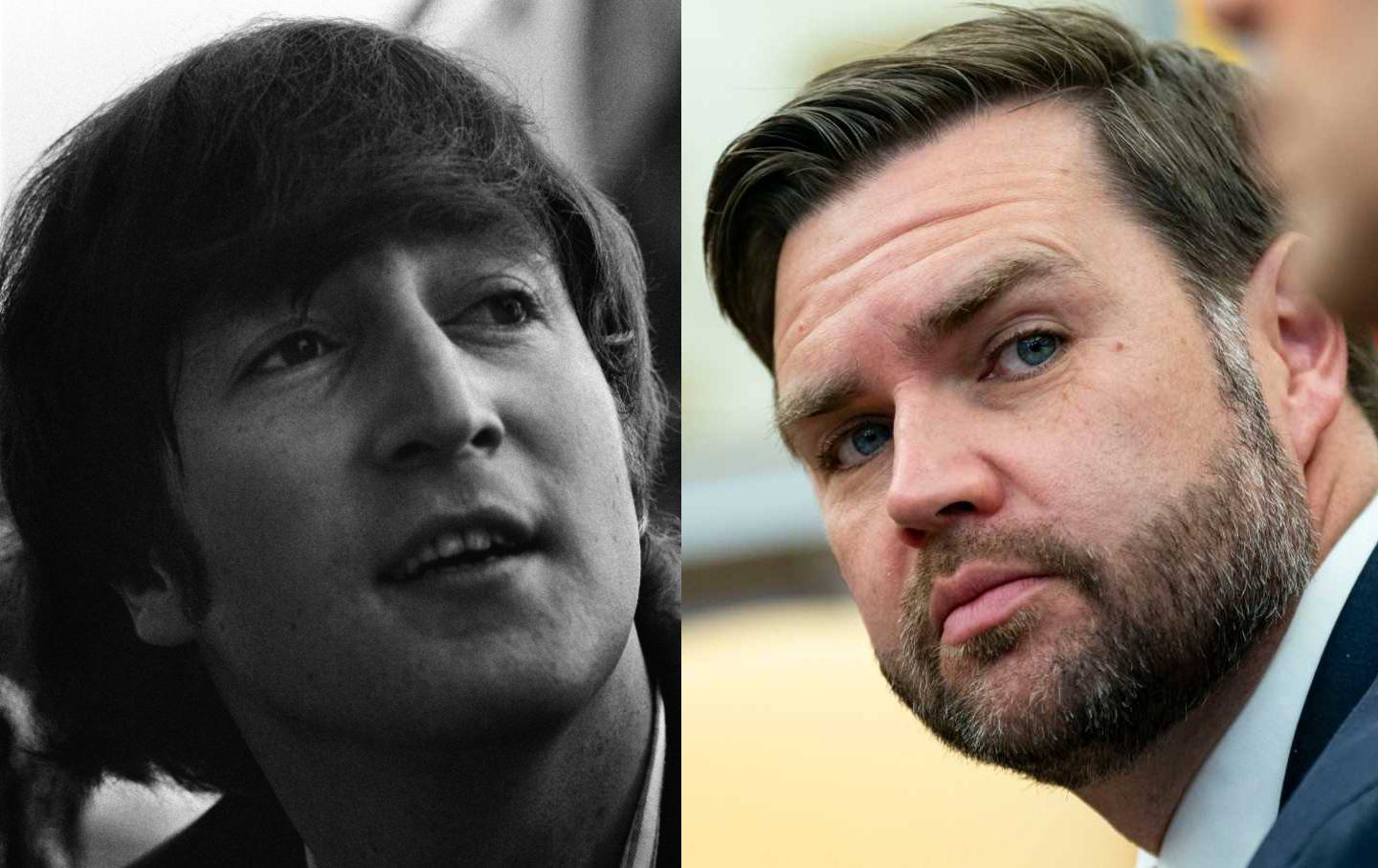A New York Cult That Promised the End of the Nuclear Family
Alexander Stille’s The Sullivanians documents the sordid history and fascinating intellectual roots of a psychotherapy group that proposed a utopian alternative to conventional family life.

Families walking in a New York park, 1952.
(Photo by Ernst Haas / Ernst Haas / Getty Images)As the dust settled on World War II, prosperity bloomed in the United States, as did a growing sense of boredom and discontent. The writer Betty Friedan called this dissatisfaction “the problem that has no name,” while in 1950 the sociologist David Riesman published his treatise, The Lonely Crowd, which outlined what he saw as a new social divide. Casting off the old American spirit of self-reliance, Riesman asserted, people now increasingly fell into one of two camps: those who were “tradition-directed” and those who were “other-oriented.” The former group, “mediated through the specific, small number of individuals with whom [its members are] in daily contact,” had a social world defined by the gravitational pull of the family unit, while the latter group relied on “their contemporaries [as] the source of direction”—a social configuration that was less bound to the family than it was to the opinions of peers, coworkers, and the media commentariat. Riesman argued that society had become dominated by other-oriented people, and that one’s social group had replaced self-sovereignty and the family. This fear resonated with the American public: Yale University Press sold out of 14 printings of The Lonely Crowd before the book was picked up by the trade publisher Anchor. While the groups that Riesman outlined are perhaps not so distinctly bifurcated, the inchoate dread that the social bonds we once knew were growing weaker or disappearing loomed large in the postwar imagination, and many rushed to articulate and sort through it.
Books in review
The Sullivanians: Sex, Psychotherapy, and the Wild Life of an American Commune
Buy this bookSaul Newton and Jane Pearce were two such people. They met in the early 1930s in Chicago and reconnected in the late ’40s while working in New York City at the White Institute, a school for psychotherapists and psychoanalysts who wanted to learn an alternative to Freudian methods. Newton worked in the bursar’s office, while Pearce trained at the institute before becoming a member of the faculty. The organization eschewed the detachment of Freudian analysis and aimed to offer an alternative called “interpersonal psychoanalysis.” Instead of an analyst asking an analysand a simple “How does that make you feel?,” the White Institute championed a more intimate and open relationship between practitioner and patient: The analyst might share personal stories from their own life, privileging affectionate reciprocity over remoteness and omniscient-seeming observation—they aimed to speak frankly and warmly, like a friend.
In the 1950s, New York City had the largest concentration of psychoanalysts in the United States, and Time magazine had put Freud on its cover three times between 1924 and 1956. Freud’s thinking and the various challenges to it were more popular than ever. Newton and Pearce were entranced by the work of Harry Stack Sullivan, the founder of the White Institute, who developed a theory called the “self-system,” referring to an internal self-policing mechanism that generates acquiescence to familial and societal expectations. Sullivan saw the relevance of Freud’s ideas about the role of the family in an individual’s formation, but he felt that it was important to understand as well the role that others played in a patient’s life. Sullivan valued peer friendships—what he called “chumship”—and used this philosophy at the White Institute to help schizophrenic patients by hiring devoted male attendants to bond with them. At the White Institute, Sullivan’s defining principle was that the relationship itself in the therapeutic dyad provided the majority of the psychic healing. The White Institute’s official history states, “The interpersonal approach underscores the human qualities of the psychoanalyst as a factor in therapeutic change.” Newton and Pearce were ardent advocates, but they believed that the institute was not willing to take the self-system theory to its logical end: breaking with the family altogether.
In 1957, Newton and Pearce, now married, left the White Institute and founded the Sullivan Institute, a nod to their debt to Sullivan. Pearce was already a successful analyst, so her clients followed her to the new institute along with a coterie of younger therapists that had trained under her. She had also inherited money from her father’s estate, which enabled her and Newton to buy a five-story townhouse on the Upper West Side; it became not only the place they lived but also the institute’s first headquarters. The Sullivan Institute grew by word of mouth and developed a cachet among New York City’s creatives: Jackson Pollock and Lucinda Childs were among its patients.
A few years later, Newton and Pearce began a social experiment they are still remembered for, asking patients to imagine a world without family and live in a community of like-minded people instead, embracing a sharing economy that included everything from sex to child-rearing. Their dream for the Sullivan Institute was to create a world where people could live “with peers, rather than families, while pursuing sexual freedom,” thereby abolishing the family and forging new social bonds among their patients. To do this, they first encouraged their patients to live in single-sex group apartments. Later, they bought two buildings as subsequent headquarters for therapists and Sullivanians to live in. One was owned by Newton and his fifth wife, who was also a therapist at the institute; the money came from patients whom they had cajoled out of their inheritances. The second was an apartment building that the institute’s leaders asked people from the group to buy shares in collectively as a co-op. A decade and a half into this experiment, 600 patients had signed up for therapy, and 350 of them lived in group apartments together.
Alexander Stille’s The Sullivanians: Sex, Psychotherapy, and the Wild Life of an American Commune examines the group’s beginnings in 1957 through its end in 1991. His book explores the group’s mission to build a “utopian world based on the principles of free love, collective living, self-actualization, and a commitment to socialism,” chronicling its capacity for both spiritual expansion and the abuse of power. In the Sullivan Institute, Stille identifies questions we are still grappling with today: Can one’s social group be a better substitute for family? Or is it just as vulnerable to hierarchy and conformity?
Many newcomers were drawn at first by the raucous weekly parties held by the Sullivanians, and many of the institute’s former patients described their initial experiences as an idyllic bower of friendship and sexual openness. The novelist and former Sullivanian Richard Price told Stille, “It felt to me like this is just: add water and it’s instant friends [and] instant sex life…. You feel drugged with—with hopefulness…. All of a sudden…it’s like somebody opened the gates of heaven.” The easy intimacy and libertine social life seemed freewheeling, but in practice the free love could be quite structured. Members carried date books bursting with plans and events: One evening, a romantic date might be penciled in; the next night, a platonic sleepover; after that, a study date or dinner date. Even the children were expected to keep an active social life of playdates and sleepovers on rotation. To live a fulfilled life, the institute believed, one had to have intimate connections with many people. Instead of just a spouse and a close friend or two, Sullivanians wanted their patients to cultivate a wide network of potential friends and lovers to commune with, lean on, and share life and daily responsibilities with.
The institute wove a dense web of therapeutic engagement. Everyone paid for regular therapy sessions, and the therapists themselves had their own therapists as well as supervisors for their work. The institute did not practice confidentiality: Therapists shared their findings with other therapists, and more senior therapists could decree a change in behavior from on high, after which the junior therapists would pass on the command to their patients. Patients also snitched on each other for breaking the institute’s rules: For example, if someone saw another person spending time more than once or twice a week with a sexual partner, they would report this unacceptable “focus” to their therapist, who would then notify the offender’s therapist to encourage an end to such relations. Falling into a “focus” deprived not only the offending person but others of additional potential relationships.
The demands of the institute were high, but the benefits outweighed the costs for many Sullivanians. Living in group apartments, they hired babysitters to communally watch the children while their parents were at work, socializing, or on dates. The children were well-attended and well-socialized living among many adults and friends instead of under the dominion of just a single parental unit. Besides childcare, Sullivanians in the group apartments created a close-knit community, teeming with sexual exploration and therapeutic growth. One Sullivanian told Stille, “There were people I slept with, played music with, talked to at parties, went backpacking with, traveled with, and discussed politics with. We had an implicit understanding of each other, similar political views, and a willingness to help each other.”
This aggressive dissolving of boundaries, however, also led to a kind of inexorable scrutiny. Pam Newton, Saul Newton’s daughter, said of growing up in the group apartments, “I was never alone. I had no privacy…there was this element of mandatory socialization.” Her bedroom was a connector room in one of the apartments, and people would walk through at all hours of the day and night. She eventually placed a sign on her door reading: “My room is not Grand Central Station. Please knock!”
This combination of shared living quarters and shared therapists combusted into a tense atmosphere of surveillance and control. In one instance, a Sullivanian child’s friendship with another child was split up because their respective parents’ therapists deemed it “unhealthy—a conniving, destructive relationship which shuts other people out.” Interpersonal psychoanalysis, the central feature of the institute, could be prurient and abusive. The method was meant to foster open, caring relations that would help to heal a patient’s interpersonal wounds and bolster their mental health. But the Sullivanians’ practice of fomenting intimate relationships curdled in the face of a problem they refused to confront: the immense power exerted by the institute’s therapists in their patients’ personal lives. Therapists pressured them to break with their families at all costs and were trained to assure patients that without their guidance, they “would wind up in a mental hospital, dead by suidice, or in prison.” Therapists also commonly slept with their patients or asked for sexual favors.
Because of the institute’s belief that parents were the root of all evil, many in the group were advised not to have children, and those with children were told to send them to boarding school and keep them there even on school breaks. Many of the therapists also espoused a deeply misogynistic theory on mothering: Mothers, in their eyes, were suffocatingly possessive, jealous of their children’s potential, and “malevolent” and dangerous to them. One Sullivanian child said that the therapists “told my parents that the worst thing a person can do is raise their own children.” All parents were inherently “murderous” and “psychopathic,” and there was no way for anyone to avoid that fate if they wanted to have a child.
Popular
“swipe left below to view more authors”Swipe →Not long after the institute began, Newton revealed himself to be a serial philanderer: He had affairs and children outside of his marriage with a number of institute members. His relationship with Pearce soured, and they divorced in 1969. Newton set up a new headquarters in a building that would house his mistresses—some of them Sullivanian therapists—as well as their children and other members, while Pearce took back the original townhouse and lived there, adopting a child from a younger female therapist in the group. Newton’s attitude toward extramarital sex extended beyond harboring a few mistresses: He also demanded sex from his patients, everyone else’s patients, and the female therapists he supervised.
As the years wore on, the institute’s decrees on polyamory and free love didn’t prove liberating for everyone. Many of the group’s women felt coerced into sex: “You felt that you weren’t allowed to say no,” one member recalled. Newton, in particular, was described by members as a “serial rapist” who only got more abusive and violent over time. This behavior was common among other members of the group’s leadership as well: Ralph Klein, one of the most senior therapists, told a 12-year-old patient that she was “sexually repressed” when she rejected his advances. When women refused sex, they were called “bourgeois.”
One member, Paul Sprecher, wrote an embittered declaration one night in a fit of exhaustion with his experiences in the group, which at that point included the Fourth Wall, a theater group that the Sullivanians had formed:
Do you want to know a secret? Do you promise not to tell Saul? You will never get better. You are not getting better. You are not growing up. You will never grow up in the Fourth Wall as constituted, because only THE LEADERSHIP is grown up. You will never get happier. You will never get less hateful. You will never get less murderous. You will never get better because you are not free to leave. You are stuck as firmly as you ever were in your home growing up, as firmly as you ever could be in a possessive marriage. You can no more defy THE LEADERSHIP than you could defy your mother.
Riesman wrote in The Lonely Crowd that while family could be supplanted by a peer group, “there are striking similarities between the tradition-directed and the other-directed. Both groups…have resorted to varieties of fatalism.” In both, individuals feel beholden to the hierarchies and power dynamics that develop; the fatalism of the social group replaces the fatalism of the family. In the case of the Sullivanians, the self-policing mechanism geared toward enforcing one’s family values was merely replaced by the “self-system” that kept one in line with the rules decreed from Newton’s patriarchal perch. In such a transference, Stille writes, the therapist becomes “the good parent the patient may never have had.”
By the late 1980s, key members were leaving the group in a state of disenchantment. And the media began to pay attention too. In 1986, The Village Voice published an article called “Escape From Utopia” on the custody trial of one of the members, who’d had her newborn taken from her under Newton’s orders after being deemed unfit because of her “possessiveness.” Soon after this exposé, local TV news outlets rushed to tell the story of the “bizarre love cult.” This deluge of public scrutiny unraveled the dream for many Sullivanians. As people moved out of the group apartments, the mortgages on the buildings became unmanageable. Though many Sullivanians had thought they’d bought into a co-op, the building had actually never been registered as a cooperative, and so no ownership shares existed. Saul Newton died in 1991, and the institute’s top leadership moved out of the apartments. That same year, two of the leading therapists agreed to surrender their licenses after facing multiple charges of misconduct. Soon, many other therapists at the institute had their licenses revoked. While some members followed a few of the therapists to a similar community in New Rochelle, N.Y., the group had more or less reached its end.
“Vulnerability of identity” was a term coined by a therapist who treated a number of ex-Sullivanians, referring to their disorientation when reconciling who they were before joining the group, who they were during their membership, and who they were after. The Sullivanians and groups like them demonstrate a truth we like to avoid: the inherent malleability of the self. Our identities are a lot more vulnerable to our social environment and the shifts of time and place than we allow ourselves to be completely aware of.
Though the Sullivan Institute ultimately failed, the insights it provides into the dissatisfactions of conventional social life remain potent, and salvageable fragments glint from the debris of its grand experiment. The group demonstrated that moving outside the nuclear family gives people a chance to try new configurations of cohabitating, relating, and socializing. The successes of the Sullivanians—the communal apartments, the group babysitters, and the emphasis on socializing, friendship, and abundant connection—are still lodestars for crafting alternative living structures, and their failures don’t augur defeat in the eternal pursuit of a shared life. As one group member, Deedee Agee, wrote in a letter to one of her sons: “We had each other, a new community,” unencumbered “by the old repressive forms we’d all grown up in ourselves and which had made our lives so difficult. We believed that we are all more like than different, that nurture trumps nature every time.”
Support independent journalism that exposes oligarchs and profiteers
Donald Trump’s cruel and chaotic second term is just getting started. In his first month back in office, Trump and his lackey Elon Musk (or is it the other way around?) have proven that nothing is safe from sacrifice at the altar of unchecked power and riches.
Only robust independent journalism can cut through the noise and offer clear-eyed reporting and analysis based on principle and conscience. That’s what The Nation has done for 160 years and that’s what we’re doing now.
Our independent journalism doesn’t allow injustice to go unnoticed or unchallenged—nor will we abandon hope for a better world. Our writers, editors, and fact-checkers are working relentlessly to keep you informed and empowered when so much of the media fails to do so out of credulity, fear, or fealty.
The Nation has seen unprecedented times before. We draw strength and guidance from our history of principled progressive journalism in times of crisis, and we are committed to continuing this legacy today.
We’re aiming to raise $25,000 during our Spring Fundraising Campaign to ensure that we have the resources to expose the oligarchs and profiteers attempting to loot our republic. Stand for bold independent journalism and donate to support The Nation today.
Onward,
Katrina vanden Heuvel
Editorial Director and Publisher, The Nation








